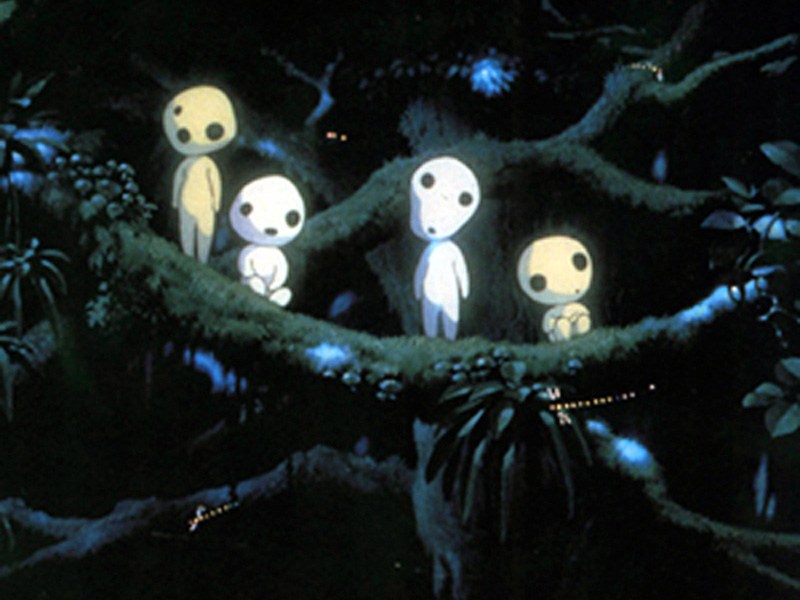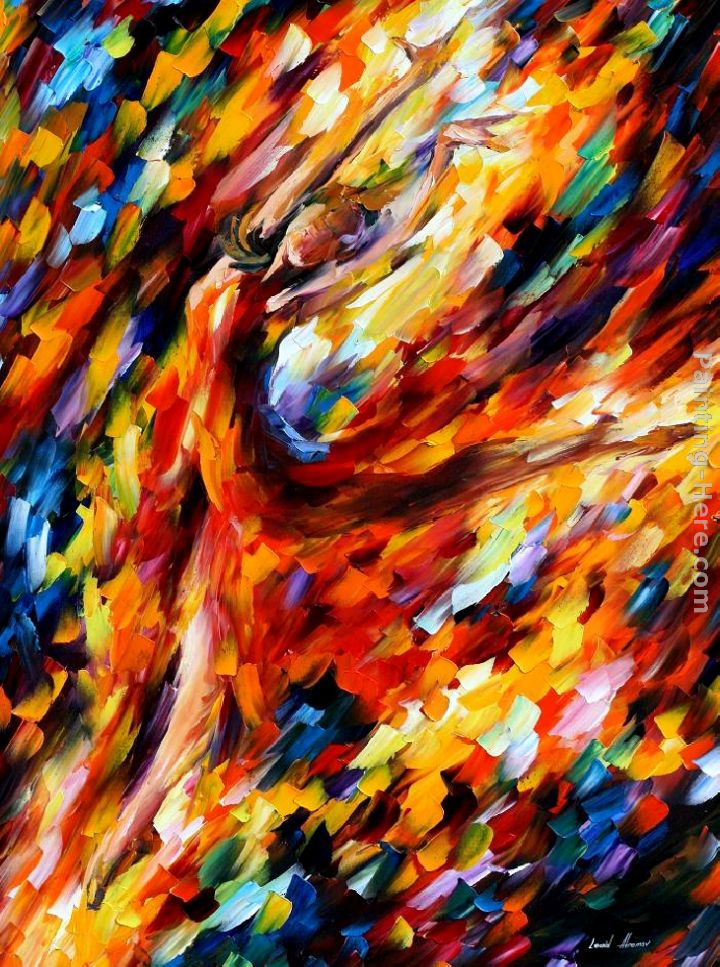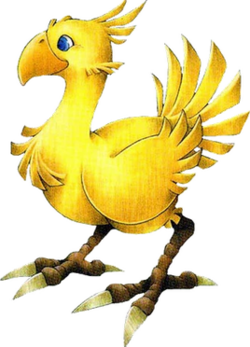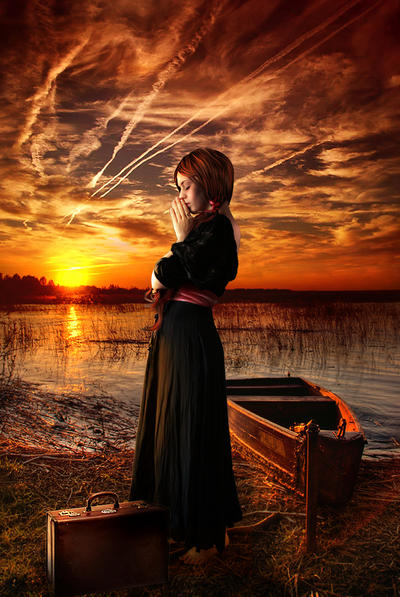Update One: Sowing the Seeds of Dreams and Legends
Baralhen
High in the canopy of a forest so tall and thick with vines and vegetation that its floor is constantly shadowed, the rains seldom stop and the mists are often thick. Amongst the trees, mists, and shadows live a diminutive people known for their ability to change their very form. They live amongst lattice networks of braided vine bridges and secluded treehouses, seldom setting foot upon the ground. Within the arboreal canopy they hunt with spear and javelin, feasting on snakes and monkeys and a plentitude of different insect species. They also prey upon the beasts that roam the forest floor including boar and deer. Perhaps most interestingly, they also farm in the high jungle canopy, growing various plants and mushrooms upon the trunks of large trees or upon the rotting core of dead branches.
North of the Baralhen lands the riotous forests thins considerably and makes way to more uniform bamboo thicket and still further, tall grasses. Occasionally Baralhen scouts have reported campfires and the sound of musical instruments from the bamboo thickets or plains. On several occasions they have spotted humanoid creature of the same stature as the Balrhen (4’

but much more solidly built and while the Baralhen are known for their agility and speed in the trees, these creatures are solidly build and travel about the forest floor. They have uniformly thick flowing hair and unkempt beards. They wear animal furs and go bare-foot and when entering the forest of the Baralhen, usually do so in pursuit of game. They hunt with strange contraptions, curved sticks with a string tied between both ends from which they fire smaller, sharpened sticks. When not hunting, they often sing or play the flute or drums. They are a boisterous people, speaking loudly and drinking heavily.
The Baralhen have watched these singing long-haired people and learned from them. Already the Baralhen are having some success with shooting smaller sticks from their ‘bows’.
Scouts from the mountainous west report finding abandoned campfires and stone marked with strange scratches. They also report finding booted footprints.
Baralhen learn archery.
The Mukakai
The heartlands of the Mukaki lie amongst gently rolling hills covered in thin dry grasses- the ridge of a wide range of hills passing east to west. Here the heat is constant and the rain rare and always welcome. The Mukaki are nomads, and follow their herds from pasture to pasture. They are fleet-footed, for they are centaurs, with the bottom halves of horses and when their herds move, their tribes move quickly indeed.
To the north of the Mukaki lands, the hills slope down to an area even more sparsely vegetated. These scrublands grow little for the herds of the Mukkaki and are generally avoided except for during the rainy season when for a few short blessed months, life returns to the dry riverbeds and stone and sand swept plains. To the south the land also slopes down and here the land receives more rain and thin forests begin to appear. Eastwards the hills rise steeply amidst dry ridges and sheer cliffs into distant snow-capped mountains.
The wide, broad ridge that make up the Mukakai hills extends westwards to the land of the Ixii. They too live amid dry, though much more craggy, hill. The Mukakai have taken a hostile stance towards these mantis-like creatures, already demanding tribute. The Ixii response, refusal, had not gone over well amongst the lesser tribes who have petitioned their despot to take what they like from these creatures.
Scouts however have urged caution- the Ixii are naturally well armored and possess both great strength and a thick exoskeleton that may well turn spear or cudgel. Some are also armed with bows- a contraption that could prove lethal in combination with their great winged leaps.
The Ixii are not the only neighbors the Mukakai have found. There is tales of distant smoke from the hills to the south-east, though no other signs have been found of sentient people in that region.
The Neirygine Confederacy
Amidst the southern shadows of a wide mountain ridge a lizard-like people have united their many clans under the rule of a single dictator, the Sjaerbast. The Neirygine homeland lies at the juncture between thick lowland jungle, south and east and sweltering grass-covered hills, north. To the west the grasslands are flatter and somewhat dryer. It is frequently drenched in monsoon-like rains and the Neirygene have adapted to a warm, wet environment.
The Sjaerbast keeps order between the clans by virtue of his command of the strange metal he and his soldiers wield. “Bronze” is a new innovation amongst the Neirygine who have previously rellied upon the much more brittle copper they mine from surface mines in their northern territories. The Narybeti, who claim guidance from the gods lie outside the social structure imposed by the Sjarbast
The Neirygene have made contact with the Taha’ar, who make their home beyond the northern mountains. Little is known of these people beyond their great size and strength but to date, they appear friendly.
Beyond the western plains men have been spotted from a distance. They ride horses bareback and wield long spears. To date they have not initiated diplomatic contact with the Neirygene but they do keep a constant watch of the border. On a few occasions foragers and hunters have been set upon by the horse-riders and forced back eastwards.
Finally, a river runs from the west and with it too does the occasional refuse of another people. From time to time carved objects or discarded linens will land upon the banks of the river and suggest another people living amongst its headwaters.
Kingdom of Celestia
Based from a small island in a large lake, the people of Celestia are united by a despotic ‘King’, a title he hopes to pass to his son and thereby make hereditary. Much of his claim to empower his lineage comes from the particularly strong bond of his family for magic, something they claim comes from the lake beyond the island. Others too claim to have been enchanted by the lake and these ‘strongmen’ also claim magical lineages and serve as an inner circle of favored ‘aristocrats’ to the ‘king’. Their adherence to the crown of fire king-making ceremony will most certainly ensure that the title will not be hereditary.
The king and his inner circle are united in a belief in the goddess of the lake, a tradition commonly accepted amongst the more magically gifted of the population who claim their extraordinary powers and strength comes from her.
The lands of the Kingdom of Celestia are based upon the large lake’s south-eastern coast and many villages are dedicated to fishing its waters. North of Celestia, beyond a wide river feeding into the lake lies a thick boreal forest thick with wolves. To the south-west a series of hills rise into higher mountains. The south-east is made up of a more lightly forested region.
Winters in the Kingdom are long and very cold and the people have learned to make well protected homes of stone to protect them from the cold and prowling predators. They farm and store grain in stone houses. From time to time thickly feathered terrestrial birds pass east to west or west to east on migration and there is talk of capturing them and raising them for their flesh.
Beyond the southern mountains the scouts of the Celestia report giant men, nine to twelve feet in height who spend a lot of time washing dishes in streams. Little is know about these people though their penchant for shining yellow jewelry marks them as an affluent people.
Kodama
A people equal part mortal and equal part forest spirit, the Kodama live along the edge of a seemingly endless forest reaching far into the north. The forest itself is mixed deciduous and coniferous and enjoys temperature weather with a brief cold winter and a long cool summer. A river runs through their lands, north to south.
The Kodama practice limited farming but also supplement their farms with wide-ranging foraging- making excellent use of the natural bounty of the forest. The forest for them is more than simply their home, it is a living thing they are closely attuned to and it said that the eldest amongst them can travel through the spirit-realm to reach the trees under which they came into this world.
The Kodama have made contact with two people. The first are the elves of Taenar Confederation, who hail from the west and are a barely united people who’s various clans struggle for ultimate leadership. The second are a race of men from the south-east calling themselves the Red Hand. These men are generally uncivilized and paint themselves in a mixture of blood of the animals they hunt and blue-grey pigments. They seem particularly impressed by the written language of the Kodama but are otherwise neutral towards the diminutive tree-spirits.
Aketua
The Aketua are race of pale elves led by an order of necromancer priests, the Forgers. Below the Forgers the elven nation is rigidly divided amongst caste lines where social mobility and prestige are directly linked to a system of meritocracy.
The lands of the Aketua are centered around a wide river flowing from dry grassland hills into the western sea. The hills themselves form a narrow band between the aforementioned western sea and another (or the same?) sea to the west. To the south the land narrows, perhaps forming a peninsula, with the hills dropping into sun-scorched sandy desert. To the north the rains fall more frequently and thin trees occasionally grow in small crops amongst the hills.
The Aketua are unique in having developed a way to animate the bodies of their own dead; these perform tasks such as farming and working the quarries that others might find difficult or tedious. For the people, the presence of dead walking and working among them has normalized, though how they deal with the grief of their dead when faced with the reality of their walking undeath every day remains a mystery known only to them.
Aketua scouts report seeing campfire smoke to the north but report no other sentient contact.
Taenar Confederation
The Taenar are a race of long lived elves divided into many great clans who periodically vie, often violently, for the kingship of the confederation. They are a magical people and closely aligned with the ethereal plane, even being able to perceive into this parallel realm of spirits and ghosts. This has led them to some sense of humility in regards to the greater world as they are intimately familiar with the great unknown that lies beyond their immediate consciousness.
The Taenar homelands are similar to that of the Kodama who lie to their west, a mixture of deciduous and coniferous forests with short cold winters and long, fairly cool summers. The Taenar lands receive more rain than the Kodama and snows are thicker here in winter. Mountains rise in the north and east while to the east and south the lands flatten out and the woods grow sparser. A river runs from the northern mountains through their lands towards the south and in spring is thick with salmon.
In addition to the Kodama to the west, the Taenar have made contact with men from the south and west that go with little clothes and paint themselves in blood and pigments from the earth. They seem cautious of the Taenar but have volunteered a name- the Red Hand.
Scouts report bare footprints similar in size and shape to the Taenar in the northeastern mountain snows, though no signs of campfire or other activities.
One clan of the Elothenin have taken it upon themselves to develop a small fleet of fishing vessels to reap the fruit of the river and fresh fish is now available in many a Taenar home of late.
Taenar receiving fishing asset
Jolustrym Kingdom
The Jolustrym make their home where snow-capped mountains meet the sea. The land is craggy and full of sheer cliffs that rise and fall continually with multiple small lakes and inland bays between. It is a land of majestic cold and hardship but also of great beauty. Summers are short and cold while winters are long, dark, and much colder. Winter snows are deep and frequent.
The people who make their home here call themselves the Jolustrym and are tall reptilian creatures with a penchant for cold. They are a hardy breed, well endowed with strength and speed. Despite their reptilian appearance they are warm blooded and unrelated to the lizardmen of distant lands. The Jolustrym are united under a single king, the Jarl and practice limited farming in highland plateaus and where the shores are flat, lumbering, mostly in the southern lands inland from the sea, and fishing- a particularly bountiful enterprise as the seas appear well endowed with fish. Herds are rare, often falling victim very quickly to bountiful wolves from the northern territories, especially in late winter and early spring.
The Jolustrym know little of their neighbors though they have spotted distant campfire smoke in the lowland hills to the south.
Taha’ar League
North of the lands of the the Neirygine lizardmen, a race of men known as the Taha’ar make their home. Their make their homeland along a river that lies in a wide valley between two great ranges- one to the south and one to the north. The river runs east to west and has many smaller rivulets feeding into it. The region has only a wet and a dry season and does not receive any snow fall. Trees native to the region tend to be slow growing and adjusted to dry conditions but do bring forth some fruit including figs and olives nonetheless. The forests and soil get somewhat better to the west and it is along the southwestern forests that a path leads to the Neirygine. To the east the region opens up to sun and dust-swept plains where life waits for the arrival of the wet season to truly bloom.
The Taha’ar do not grow much food, relying mostly on highland pasturage to feed their goat and sheep herds, though they also supplement this with fish from the river. Foraging from the forests brings some fruit and herbs.
Like their southern neighbors, the Taha’ar have divined the secrets of bronze but unlike their southern neighbors who take copper from surface deposits, the Taha’ar have learned to dig deep tunnels into the ground to seek copper and tin to feed their forges.
The Taha’ar have met no other sentient neighbors beyond the Neirygine.
Ixii
The Ixii are a breed of mantis-like humanoid insects. They have long antennae that constantly twitch and probe not only the air but the ethereal plane beyond as well. The Ixii use a combination of powerful hind legs and locust-like wings to achieve limited aerial maneuverability, a trait used in combination with their D-shaped, biconvex bows to make them excellent hunters.
The Ixii are also farmers, despite a homeland that is notably made up of dry hills with infrequent rainfalls. None-the-less they have farmed their southern territories, which receive more rain, extensively and grow barley, wheat and rye.
Beyond the craggy, cliff and hill-filled scrublands that make up the Ixii homeland, the land slopes downwards in three directions, the north, towards a relatively unknown sea, to the south-east, towards a fertile river valley, and to the south-west, towards a dune-filled sandy desert.
The Ixii have made contact with centaurs from the west who have called themselves the Mukakai. The Mukakai are a nomadic people and despite their soft skin are highly militant with well-trained warriors eager for blood. They have already demanded a tribute from the Ixii, one that has been categorically refused. In the wake of this diplomatic falling-out, the Ixii people have begun to worry for their future and to prepare for war. Many queens advocate the training of more warriors, while others suggest that (some other hive) pay the centaur’s demand. While the Ixii are known primarily for their complex dances and wing-based song, more and more their dances have turned to combat training.
Many Colored Lands of the Danaan
A singularly individualistic people, the Danaan would
always rather follow their latest whim then cooperate with their neighbor. Danaan are like currents in a fast-flowing river, equally unique, largely unknowable and often deadly. Their warriors are honed by centuries of ritualized combat and mock (and real) raiding and many possess disturbing control over illusion and the minds of others, especially when adorned with precious gold jewelry.
The Danaan are united (well, sort of) by a king chosen by his fertility, though in truth he possess little actual control over his subjects who are more likely to do what they will then to serve him, even in their own best interests. Much of the actual rule of the Danaan is based on inherent capacity to coerce amongst the most magically gifted of their number and without such capacity, the entire nation would be one of hero-warriors seeking personal glory and adventure without any actual soldiers amongst their entire population. Indeed, the Danaan always appear to be in a constant state of civil turmoil but for them, it is simply their way.
The Many Colored lands are made up primarily of coastal plains dotted with numerous small, primarily deciduous forests. While the region experiences winters, they are much shorter and warmer than there are for their northern neighbors the Celestia, though precipitation in both winter and summer is frequent. A major river feeds from the northern forests to the sea but so to do numerous smaller rivers and streams and the Danaan have learned to seek gold therein and many can be found panning the shores of these streams in constant search for the gold that not only decorates them but attunes and focuses their inherent magical abilities.
Iwa-Saalit
A bipedal lizard-people perhaps distantly related to the Neirygene, the Iwa-Saalit scales are much more brightly colored, possess copses of bright feathers and are not nearly as thick. Their talons and horns are definitively not designed for use as natural weapons, being both too short and too fragile to function as such. They are cold-blooded people and spend part of every morning warming themselves in the sun on rocky ridges before progressing to the day’s activities.
The Iwa-Saalit make their home in the high reaches of a mountain range separating a wide and trackless desert to the north and an unknowable jungle filled with biting and stinging insects to the south-west. Their lands are a strange climatic clashing point where the constant rains of the southern jungles catch upon their ridges and valleys leaving thick sweltering mists while the northern face of the mountain ridges bake in a desert sun rarely gifted with rains. Frequent storms, often decorated with thunder and lightning, strike the Iwa-Saalit high-lands.
The people themselves largely make up their homes on the southern edges of the mountainous ridges, amongst a vast and unknowable network of high-mountain rivers carving their way through the upper reaches of the jungle highlands. The Iwa-Saalit have added to these natural waterways with canals of their own, indeed these people have a natural affinity for construction and engineering and are accomplished stone-masons; their temples and alters being particularly spectacular examples thereof.
A highly superstition people, the Iwa believe most events in their lives are the result of their gods, the most prominent of which, Aerin, has a large priesthood and a unrelenting demand for blood sacrifice.
To date the Iwa have yet to make diplomatic contact with another sentient race but certainly any they should meet might be considered viable sacrifice. That said, in the deserts of the north, the sharp-eyed Iwa scouts have occasionally seen distant silhouettes of fleet-footed creatures swiftly racing across the sands and scrublands on four legs, often leading herds of unknown animals.
The Iwa possess a rudimentary written language they use to decorate their masonry and of late, to describe numbers and measurements of things such as the weight of stone. This understanding of numbers has led them to a much more calculated approach to their stonework and canal building.
Iwa discover mathematics


 but much more solidly built and while the Baralhen are known for their agility and speed in the trees, these creatures are solidly build and travel about the forest floor. They have uniformly thick flowing hair and unkempt beards. They wear animal furs and go bare-foot and when entering the forest of the Baralhen, usually do so in pursuit of game. They hunt with strange contraptions, curved sticks with a string tied between both ends from which they fire smaller, sharpened sticks. When not hunting, they often sing or play the flute or drums. They are a boisterous people, speaking loudly and drinking heavily.
but much more solidly built and while the Baralhen are known for their agility and speed in the trees, these creatures are solidly build and travel about the forest floor. They have uniformly thick flowing hair and unkempt beards. They wear animal furs and go bare-foot and when entering the forest of the Baralhen, usually do so in pursuit of game. They hunt with strange contraptions, curved sticks with a string tied between both ends from which they fire smaller, sharpened sticks. When not hunting, they often sing or play the flute or drums. They are a boisterous people, speaking loudly and drinking heavily.






 In the meantime, have this little bit of lore.
In the meantime, have this little bit of lore.





